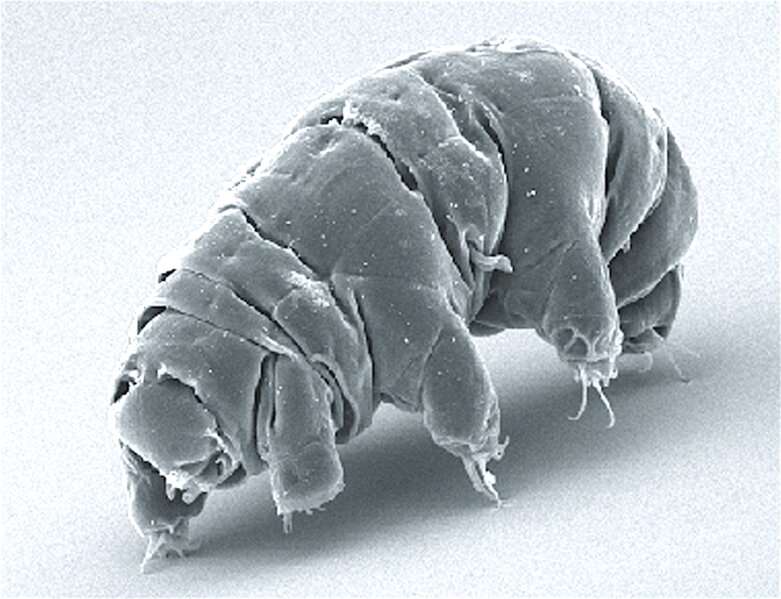July 6, 2023 report
This article has been reviewed according to Science X's editorial process and policies. Editors have highlighted the following attributes while ensuring the content's credibility:
fact-checked
peer-reviewed publication
trusted source
proofread
Morphological comparison study helps explain development of unique tardigrade

A team of biologists and Earth scientists from the U.S., China and South Korea has uncovered clues to explain the unique physiology of the tardigrade (also known as the water bear). In their paper published in Proceedings of the National Academy of Sciences, the group describes their analysis of tardigrade ancestors along with multiple tardigrade species.
Tardigrades are microscopic, eight-legged invertebrates that are able to survive in extremely hostile environments no other known creature could withstand, including boiling water and outer space. Their remarkable survivability is due to their ability to enter cryptobiosis, a hibernation-like state in which all metabolic activity is reduced to the point that it is nearly impossible to detect. And while the tiny creature's abilities have been well researched and documented, how they came to be such hardy survivors has not. In this new effort, the research team investigated the evolutionary path of the water bear.
Prior research has shown that tardigrades evolved from a now-extinct species of marine worms known as lobopodians, which died out during the Cambrian Period, some 500 million years ago. Despite such long time spans, many lobopodian fossils have been found, and researchers have been able to discern many of their physical characteristics. They had multiple stubby legs, for example. In this new effort, the researchers studied 79 unique subcategories of lobopodians and 40 species of tardigrades hoping to trace their lineage.
The research team found that luolishaniids are the mostly likely lobopodian group from which tardigrades evolved. This finding, they note, suggests that modern tardigrades inherited many of their morphological characteristics from their ancestors, including their overall shape, their plates and the unique circular structures that surround their mouths. It also appears that they inherited their odd-looking claws, which extend directly from their "hands" rather than from finger-like appendages.
But the team also found differences—tardigrades have fewer trunk segments than luolishaniids, for example. And their limbs are shorter. Such changes, the team notes, are likely evolutionary adaptations to the environments in which they lived.
More information: Ji-Hoon Kihm et al, Cambrian lobopodians shed light on the origin of the tardigrade body plan, Proceedings of the National Academy of Sciences (2023). DOI: 10.1073/pnas.2211251120
Journal information: Proceedings of the National Academy of Sciences , PLoS ONE
© 2023 Science X Network




















